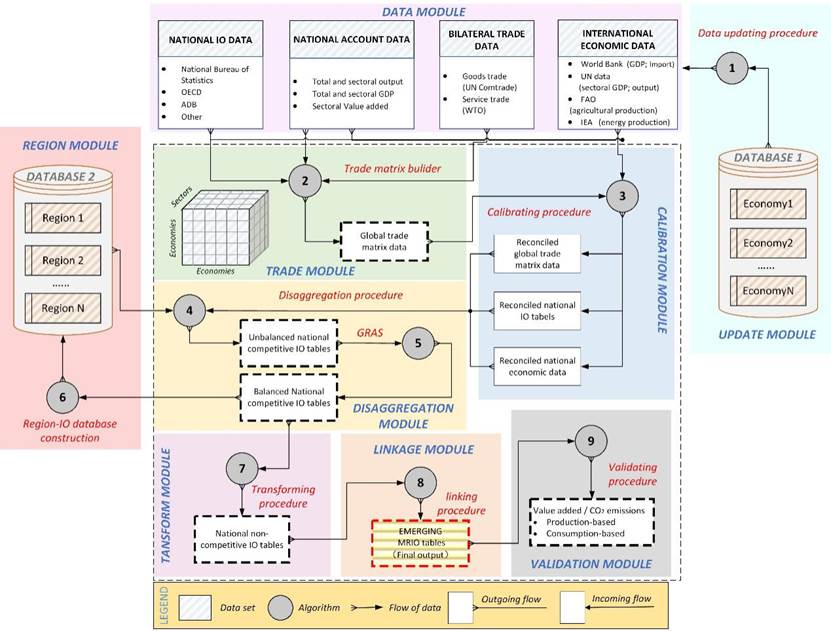With the development of globalization, emerging economies are playing an increasingly important role in global economic supply chains. Facing the severe challenge of climate change, how to achieve green, low-carbon and sustainable development in emerging economies has become a top priority to achieve global carbon neutrality in the future.
Due to the poor availability and difficulty in collecting macroeconomic data, the data information of emerging economies in the existing multi-regional input-output (MRIO) database is not detailed enough at the national and departmental levels, which hinders the MRIO model's ability to analyze the historical development patterns and future development paths of emerging economies in global supply chains.
With a view to the above problems, Prof. Guan Dabo’s Research Group of the Department of Earth System Science, Tsinghua University, in collaboration with several scholars of other institutions such as University College London, Norwegian University of Science and Technology, University of Groningen and Shanghai University of Finance and Economics, innovated multi-source data fusion methods and developed a modular global multi-regional input-output model compilation framework (EMERGING MRIO). EMERGING MRIO is a global multi-regional input-output database with a focus on emerging economies, developed by Chinese scholars with completely independent intellectual property rights. Compared with the existing database, the EMERGING database has the following five characteristics: 1. High national resolution. The database comprehensively covers economic and trade information of all economies in the world. 2. High sector resolution. The database contains enough detail to capture the structural changes in supply chains of manufacturing and service sectors. 3. Extensive coverage of time. The database covers many historical years since 2010. 4. Have up-to-date representation of changes to allow for timely policy implications. 5. Use modular compilation for timely updates. Modules do not influence each other, which reduces the coupling process among steps and improves compiling efficiency.The EMERGING-MRIOTs cover 245 economies with 135 sectors and provide annual MRIO tables of 2010 and the period running from 2015 to 2019. The methodological achievements of model and database compilation have been recently published online in Journal of Industrial Ecology under the title “Full-scale, near real-time multi-regional input-output table for the global emerging economies (EMERGING)”. Meanwhile, related data are released on CEADs website for free access. (https://www.ceads.net/)
Huo Jingwen, a doctoral candidate of the Department of Earth System Science, Tsinghua University, and Chen Peipei, a doctoral candidate of University College London, are the co-first authors of the paper, and Professor Guan Dabo of Tsinghua University, and Associate Professor Meng Jing of University College London are the co-corresponding authors of the paper. Other collaborators include Dr. Zheng Heran from Norwegian University of Science and Technology and Professor Klaus Hubacek from University of Groningen. This research is supported by the National Natural Science Foundation of China (72140001 and 41921005).

Framework of EMERGING method update database MERGING model constitutes the framework.
Paper link:
Huo, J., Chen, P., Hubacek, K., Zheng, H., Meng, J., & Guan, D. (2022). Full-scale, near real-time multi-regional input–output table for the global emerging economies (EMERGING). Journal of Industrial Ecology, 1–15. https://doi.org/10.1111/jiec.13264
Contributed by Huo Jingwen
Edited by Wang Jiayin
Reviewed by Zhang Qiang